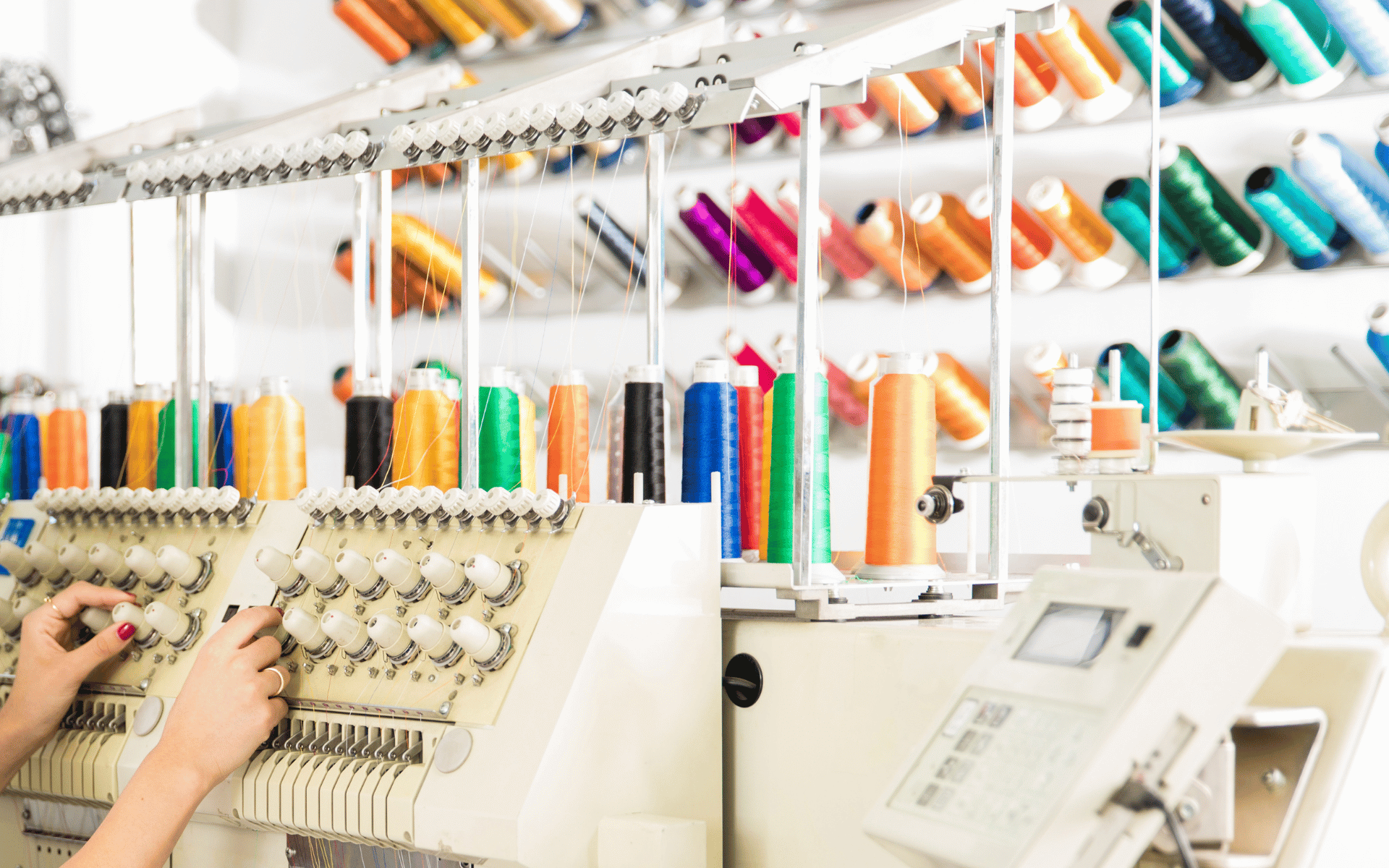Embroidery has a rich history dating back centuries, adding beauty, elegance, and personalization to various fabrics and garments. The practice of needlework has transformed in recent years thanks to a procedure called “embroidery digitizing.”
In this comprehensive guide, we will delve into the world of exploring what digitization means, process, benefits, and its profound impact on the art of embroidery. Additionally, we will provide step-by-step instructions on digitising artwork for embroidery, empowering beginners and enthusiasts to embark on their digitization journey and create stunning stitched designs.
Whether you’re a beginner or an experienced embroiderer, this article will provide valuable insights into digitising artwork for embroidery.
Understanding Embroidery Digitising
Embroidery digitizing refers to converting artwork or designs into digital files that embroidery machines can read and stitch. It involves using specialised software to create stitch patterns, define thread colours, and determine stitch densities.
By converting intricate designs, logos, or images into stitches, digitization enables embroidery machines to recreate them accurately on fabric. This section will delve deeper into the concept of embroidery digitising, highlighting its significance and impact on modern embroidery practices.
Definition of “how to digitize” in embroidery: Understanding the transformation from physical designs to digital files.
1. Exploring Embroidery Digitising:
- Benefits of using digitised embroidery designs: Discuss the advantages of digitization, such as time efficiency, accuracy, and replicability.
- Impact of technology on traditional embroidery techniques: Examining how technology has influenced how embroidery is done and the role of digitizing embroidery in this transformation.
- The increasing popularity of machine embroidery digitising: Exploring the rise of machine embroidery and its connection to digitization.
2. The Process of Digitising Artwork for Embroidery:
Several crucial phases are involved in digitising artwork for needlework, each of which affects the result. To successfully digitise needlework, it is essential to comprehend these procedures and approaches. An in-depth examination of the digitising process will be provided in this section.
3. Preparing Artwork for Digitization:
- Selecting suitable designs for digitization: Considerations for choosing designs for embroidery digitising.
- Assessing design complexity and limitations: Understanding the intricacy of the design and its compatibility with digitization.
4. Tools and Software for Embroidery Digitising:
- Introduction to embroidery digitising software: Overview of popular software options and their features.
- Choosing the right software for your needs: Factors to consider when selecting the software for embroidery digitising.
5. The Digitization Process:
- Importing artwork into the software: Step-by-step instructions on importing the design file into the digitising software.
- Tracing and outlining design elements: Explaining the process of tracing the design and creating outlines for different elements.
- Assigning stitch types and directions: Understanding the different stitch types and directions used in embroidery digitising.
- Defining colour and thread choices: Selecting appropriate colours and assigning them to different design elements.
- Optimising stitch density and underlay: Adjusting the stitch density and underlay to achieve the desired texture and stability.
- Previewing and refining the digitised design: Reviewing the digitised design on the software and making necessary adjustments for optimal results.
Tips for Successful Embroidery Digitising

Embroidery digitising is both an art and a skill that requires attention to detail and technical expertise. To ensure successful digitising and achieve high-quality embroidered results, consider the following tips:
1. Use High-Quality Artwork
The quality of the artwork you start with greatly impacts the final digitised design. It’s crucial to begin with high-resolution, clear, and well-defined images. High-quality artwork provides a solid foundation for accurate tracing and digitising. Use high-quality images that are neither pixelated nor low-resolution, as they can produce digitised files that could be of better quality and affect the final embroidery product.
2. Master the Software
To excel in embroidery digitising, it’s essential to become proficient in the software you’re using. Take the time to learn and understand your chosen embroidery digitising software’s features, tools, and capabilities. Familiarise yourself with shortcuts and techniques that can enhance your workflow and efficiency.
3. Pay Attention to Stitch Density
Stitch density plays a critical role in the quality and appearance of the embroidered design. It refers to the number of stitches within a specific area. Striking the right balance is crucial to avoid issues like puckering or distortion and achieve optimal coverage and durability.
When digitising a design, consider the fabric type, the design size, and the desired visual effect. Dense stitch patterns may be suitable for smaller designs or areas requiring more coverage, while lighter stitch densities may work better for larger or delicate fabrics.
4. Proper Underlay and Pathing
Underlay stitches provide stability and support to the design during the embroidery process. They help prevent distortion, improve stitch registration, and enhance overall design quality. For successful embroidery digitising, it is crucial to comprehend the many kinds of foundation stitches and how to use them properly.
Experiment with underlay techniques like zigzag, edge, or centre walks to determine which works best for different design elements and fabric types. Proper underlay stitching ensures the design remains crisp and secure, even after multiple washes or wear.
5. Test and Refine
Before proceeding with a full-scale embroidery project, conducting thorough testing and refining of the digitised design is crucial. Stitch the design on similar fabric and garments to the intended final product. This testing phase allows you to assess the design’s accuracy, overall appearance, and quality.
The Process of Embroidery Digitising
1. Preparing Artwork
Before digitising artwork for embroidery, it’s important to ensure it is suitable. This involves cleaning up the artwork, adjusting its size and resolution, and selecting the appropriate file format. The basis for an effective digitising process is good planning.
2. Choosing the Right Software
Selecting the right embroidery digitising software is crucial. There are numerous software choices, each with unique features and functionalities. Wilcom, Embird, and Pulse are among the more well-liked software options. It’s crucial to pick software that fits your needs, budget, and level of expertise.
3. Digitising the Artwork
Digitization involves importing the artwork into the chosen software and using its tools and features to digitise and create embroidery files the digitise file for embroidery. This includes tracing the design, assigning stitch types and directions, determining thread colours, and adjusting stitch densities. Skilled digitizers pay close attention to detail, ensuring the digitised design faithfully represents the original artwork.
4. Testing and Fine-Tuning
Once the design has been digitised, testing it on a digitising machine and making any necessary adjustments is important. This may involve tweaking stitch parameters, thread tensions, or making modifications to enhance the design’s appearance. Testing and fine-tuning ensure that the final embroidered result matches the desired outcome.
Step-by-Step Guide to Digitise Artwork for define embroidery
Here are we guide to Digitise Artwork for define Embroidery:
- Preparing the artwork and software: Detailed instructions on preparing the design file and setting up the digitising software.
- Tracing and outlining design elements: Step-by-step process of tracing the design and creating outlines for different elements.
- Assigning stitch types and directions: Instructions on selecting and assigning appropriate stitch types to different design elements.
- Defining colour and thread choices: Tips for choosing and assigning suitable colours to the design.
- Optimising stitch density and underlay: Techniques for adjusting stitch density and underlay to achieve the desired texture and stability.
- Previewing and refining the digitised design: Guidelines on reviewing the digitised design and making necessary adjustments for optimal results.
The Significance and Future of Embroidery Digitising
Embroidery digitising significantly impacts the art of embroidery, offering unprecedented possibilities for creativity, precision, and customization. This section will explore the significance of embroidery digitizing and its future implications.
1. Custom Embroidery Digitising:
- The rise of personalised and customised embroidery: Discussing the increasing demand for personalised embroidery designs and the role of digitization in fulfilling this demand.
- Advantages and opportunities for businesses and individuals: Exploring the benefits of custom embroidery digitising for businesses and individuals, such as branding, personalization, and creative expression.
2. Impact on the Art of Embroidery:
- Preserving traditional embroidery techniques: Highlighting how embroidery digitising preserves traditional techniques while incorporating modern technology.
- Enabling intricate and complex designs: Examining how digitization allows for creating intricate and complex designs that were previously challenging or impossible to achieve manually.
- Redefining the boundaries of creativity in embroidery: Discuss how embroidery digitising expands the creative possibilities in embroidery and encourages experimentation.
3. Exploring New Frontiers:
- Integration of AI and machine learning in embroidery digitizing: Discussing the emerging role of artificial intelligence and machine learning in automating and enhancing the digitization process.
- Innovations in embroidery machines and software: Exploring the advancements in embroidery machines and software that facilitate more precise and efficient digitization.
Benefits of Embroidery Digitising
1. Precision and Consistency
Embroidery digitising allows for precise control over stitching, ensuring that each design is replicated consistently across multiple items. Whether you’re embroidering logos, monograms, or intricate patterns, digitizing ensures accuracy and uniformity.
2. Customization and Creativity
Digitising artwork for embroidery opens up a world of customization and creativity. Designs can be easily resized, rotated, or modified to fit different items and surfaces. Embroiderers can experiment with thread colours, stitch densities, and special effects to create unique, eye-catching embroidered pieces.
3. Time and Cost Efficiency
Digitising artwork for embroidery can save both time and money. Once a design is digitised, it can be easily replicated on-demand, reducing the need for manual setup and reducing production costs. Additionally, digitised designs can be stored and reused in the future, saving time on recurring projects.
Conclusion
Embroidery digitising has transformed the art of embroidery, offering unprecedented possibilities for creativity, precision, and customization. By understanding the process and techniques, individuals can embark on their digitization journey, bringing their unique designs to life. As technology advances, we can anticipate even more exciting developments in how to digitise embroidery, pushing the boundaries of this traditional craft and opening new avenues for creative expression. Whether you are a seasoned embroiderer or a beginner, embracing embroidery digitising can elevate your skills and unleash your artistic potential.
People Also Ask
Embroidery digitising converts artwork or designs into digital files that can be stitched by embroidery machines, allowing for precise and intricate embroidery creations.
What is embroidery digitising?
Embroidery digitising converts artwork or designs into digital files that can be stitched by embroidery machines, allowing for precise and intricate embroidery creations.
How to digitise artwork for embroidery?
To digitise artwork for embroidery, you need specialised software to import the artwork, trace the design, assign stitch types and directions, and determine thread colours and densities.
What are the benefits of embroidery digitising?
Embroidery digitising offers benefits such as precise and consistent stitching, customization and creativity in designs, time and cost efficiency, and the ability to store and reuse digitised designs for future projects.
Can I digitise my artwork for embroidery?
Yes, with the right software and skills, you can digitise your artwork for embroidery. However, it requires knowledge of digitising techniques, software proficiency, and understanding of the limitations and requirements of embroidery machines.
Are there professional services available for embroidery digitising?
Professional embroidery digitising services specialise in converting artwork into high-quality digitised files. These services have skilled digitizers who can ensure accurate replication of designs and provide faster turnaround times for embroidery projects.
Tristar Digitizing provides the best embroidery digitizing services to its customers worldwide!


